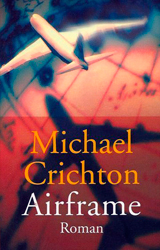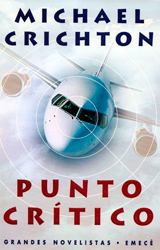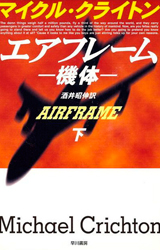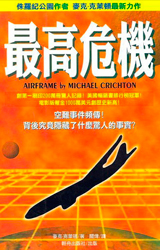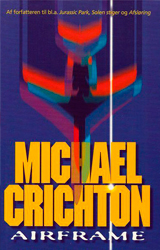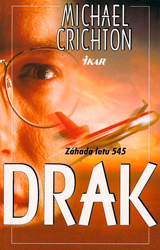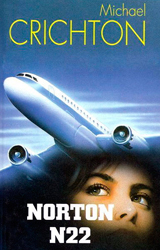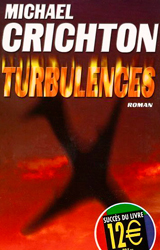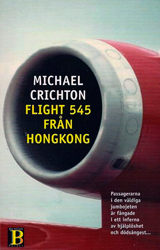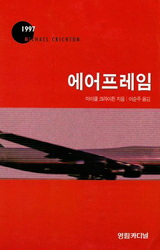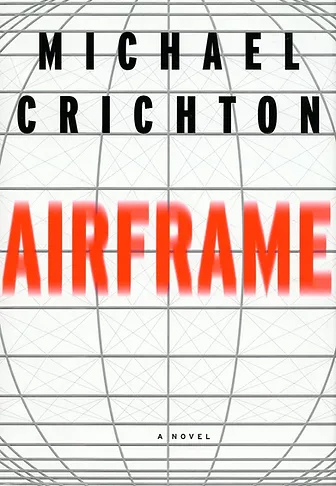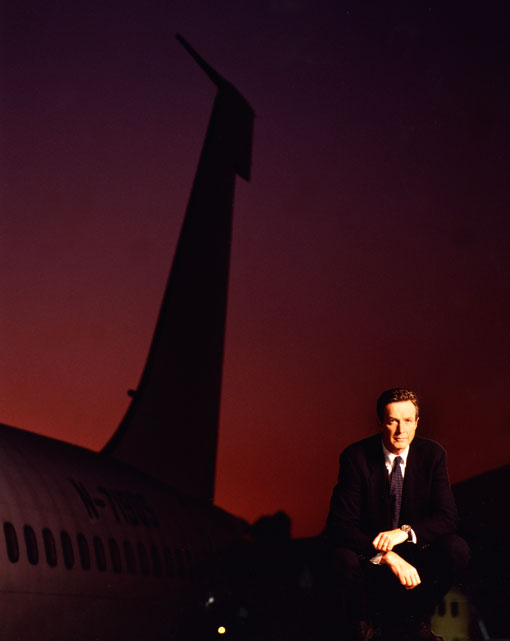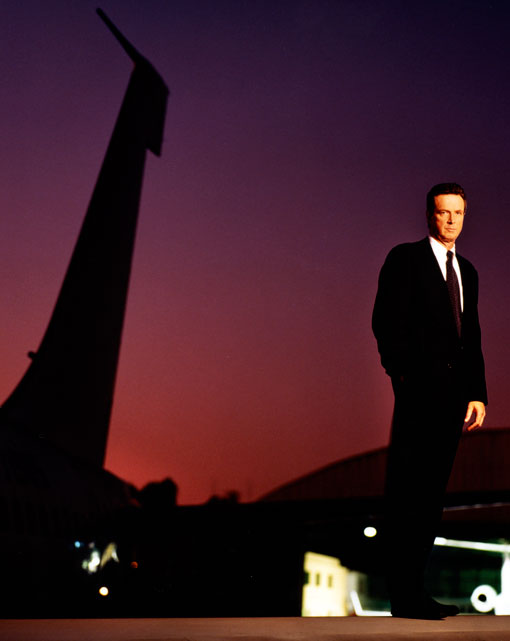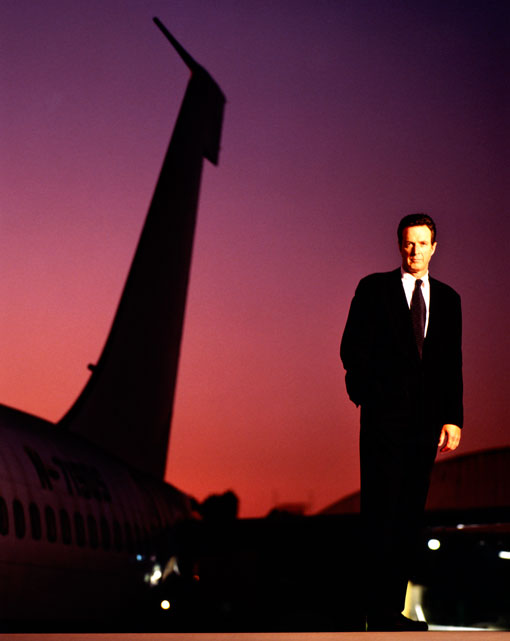Airframe
In His Own Words
I had wanted to write a story about manufacturing airplanes for many years, because it’s such a fascinating area: nothing human beings have ever manufactured is as complicated as a commercial jet aircraft. And nothing is built to such demanding specifications.
But I could never come up with a story. Finally, someone in the aircraft industry brought a real incident to my attention, and I started to write.
So Airframe is based on a true story-actually, several true stories. There are, of course, a number of famous episodes of deadly turbulence, as well as several instances in which pilots have allowed other people to fly the plane. I used the National Transport Safety Board reports on these real incidents as the basis of the story. (The NTSB reports are almost novels in themselves, with interviews, pictures, details, the whole works.)
After months of research, I got pretty casual about the whole thing. One day I was flying across country with my research spread out on my lap-NTSB photos of the interior of an aircraft that had been badly smashed-up from turbulence. People would walk by, see the pictures and say, “What are you doing?” Finally a flight attendant asked me to put the pictures away. I was disturbing the other passengers.
I don’t know why. Because the real discovery I made in my research is that commercial air travel is incredibly safe. Each year, thousands more people die choking to death from food than die on airplanes. And nobody is afraid to sit down at the table to eat.


Synopsis
In the early hours on Monday morning, TransPacific Airlines Flight 545, enroute from Hong Kong to Denver, experiences a horrifying event. Three people are killed and countless others are injured as their plane ascends and descends in a terrifying roller-coaster ride reportedly due to turbulence.
The plane’s manufacturer, Norton Aircraft dispatches an in-house Quality Assurance Vice President, Casey Singleton, to discern what exactly occurred—and most importantly, who is to blame.
Over the next five days, Casey must sift through literally thousands of systems to determine what went wrong. The task is complex enough, but the added stress of an as-yet-unsigned sales deal of this N-22 plane to the Chinese scheduled to happen by week’s end, intense media scrutiny, union difficulties and a saboteur all but make her task impossible.
Casey finally unravels the mystery of Flight 545 but needs physical proof to substantiate her theory. She decides to recreate the in-air event and take along a pushy reporter to help dispel any thoughts that the N-22 is unsafe.
Following the demonstration, which proves that it was pilot error, Casey keeps her job, the Chinese deal goes through and Norton Aircraft is saved. The most complex part of the aircraft—the wing—is also, unfortunately, part of the Chinese deal. This is the very thing the unions feared the most. The other key players in the unfolding drama do not fare so well—including the media.
Passage 1
The plane went into another steep dive. An elderly Chinese woman slid down the aisle on her back, screaming. A teenage boy followed, tumbling head over heels. Emily looked at Tim, but her husband wasn’t in his seat anymore. Yellow oxygen masks were dropping, one swinging in front on her face, but she could not reach for it because she was clutching her baby.
She was pressed back into her set as the plane descended steeply, an incredibly loud whining dive. Shoes and purses ricocheted across the cabin, clanging and banging; bodies thumped against seats, the floor.
Tim was gone. Emily turned, looking for him, and suddenly a heavy bag struck her in the head – a sudden jolt, pain, blackness and stars. She felt dizzy and faint. The alarms continued to sound. The passengers continued to scream. The plane was still in a dive.
Emily lowered her head, clutched her infant daughter to her chest and for the first time in her life, began to pray.
Passage 2
Walking across the plant toward Hangar 5, Richman said, “Marder seemed pretty worked up, didn’t he? Does he believe all that?”
“About the DC-10? Yes. One crash finished the aircraft.”
“What crash?”
“It was an American Airlines flight from Chicago to LA,” Casey said. “May, 1979. Nice day, good weather. Right after takeoff the left engine fell off the wing. The plane stalled and crashed next to the airport, killing everybody on board. Very dramatic, it was all over in thirty seconds. A couple of people taped the flight, so the networks had film at eleven. The media went crazy, called the plane a winged coffin. Travel agents were flooded with calls canceling DC-10 bookings. Douglas never sold another one of them.”
“Why did the engine fall off?”
“Bad maintenance,” Casey said. “American hadn’t followed Douglas’s instructions on how to remove the engines from the plane. Douglas told them to first remove the engine, and then the pylon that holds the engine to the wing. But to save time, American took the whole engine-pylon assembly off at once. That’s even tons of metal on a forklift. One forklift ran out of gas during the removal, and cracked the pylon. But the crack wasn’t noticed, and eventually the engine fell off the wing. So it was all because of maintenance.”
Passage 3
An aircraft industry insider told Michael Crichton about a near-crash mid-air event that was never reported in the media. Within the industry, however, questions arose about whether the incident was caused by design flaws in the aircraft itself. Airframe recounts a fictional version of the incident, how the company carefully investigated it, and how the media covered the entire episode.
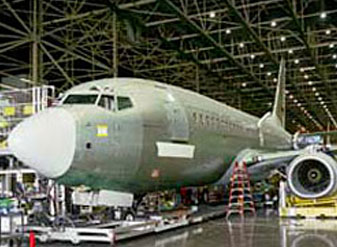

“They weigh half a million pounds, fly a third of the way around the world, and they carry passengers in greater comfort and safety than any vehicle in the history of mankind.”
– From Airframe
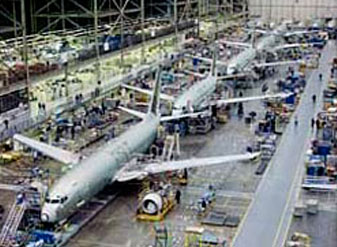

“The huge, partially assembled widebody jets gleamed under halogen lights. Fifteen aircraft in various stages of construction were arranged in two long rows under the mile-long vaulted roof.”
– From Airframe
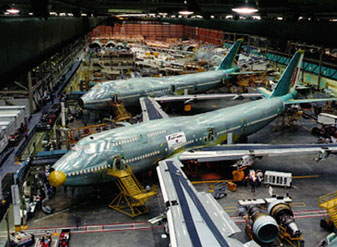

“We call this the bird farm,” Casey said. “The planes’re so big, it’s hard to get a sense of the scale. You don’t see many people here, right?”
“No, not many.”
“Actually, there’s five thousand people in this building right now.”
– From Airframe
Industry reviewers were impressed with the detailed knowledge conveyed by the book. Some were even able to figure out that Michael Crichton had done a lot of his research at the Douglas facility at Long Beach (later taken over by Boeing.)
Airframe was actually reassuring to travelers, because it detailed how extraordinarily well these aircraft are made. But many of the mainstream media reviewers said the book would scare you, clearly demonstrating that they hadn’t read it.


Airframe was #1 on the New York Times Bestseller List for 5 weeks.
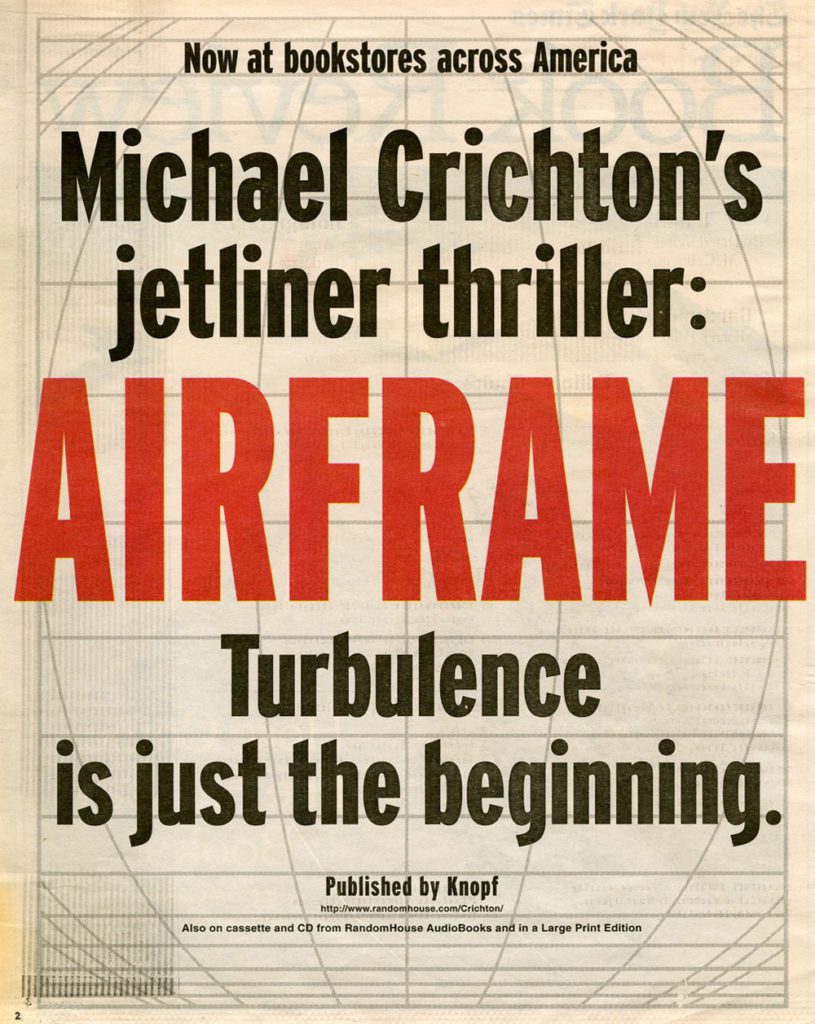

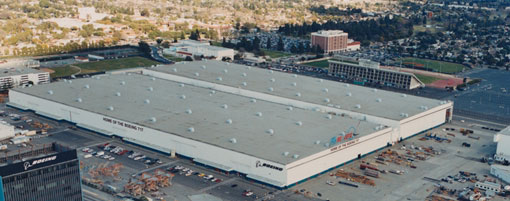

Book Covers
